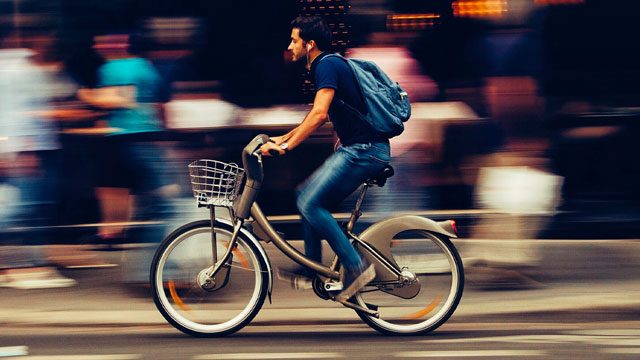SUMMARY
This is AI generated summarization, which may have errors. For context, always refer to the full article.


Are you tired of spending hours on your commute everyday? The feeling of being stuck in traffic or waiting in line wears you down. You feel powerless, depending on undependable or expensive transport options.
Here’s one option you can try – ride a bike! Control your commute by cycling through the city. You’ll have the freedom to move on your own. You’ll save money and the environment by burning fat and not gas. Parking won’t be a problem which will allow you to stop wherever and whenever you want.
Cycling in in an urban setting can be intimidating because of all the other vehicles, but once you get a hang of it you’ll feel you can just get to anywhere with your bike. Just remember to put safety first.
Here are some tips to make your ride safe and enjoyable:
Practice your handling in a controlled environment. Being out on the road requires you to have composure, and the best way to build composure is through practice. You can do this inside your subdivision, nearby parks or public spaces. Be sure to practice look over your shoulder when you change lanes and take turns.
Also remember to practice using left and right hand signals for turning. These signals are done by raising your appropriate hand pointing the direction you are turning. It also helps if you can do this with a group so you can all look out for each other.
Choose a bike appropriate for your commute. Bikes vary by use. Most bike commuters use mountain bikes whose wheels can conquer any pothole. Folding bikes are available for multi-modal commuters. They can be easily folded to fit in the trunk of a taxi, brought into a bus or on a train. For short errands, surplus Japanese bikes do the job of carrying you and your cargo.
These bikes also have more relaxed geometries, meaning you’ll be sitting more upright with easier balance. This is useful in slow-moving or stop-and-go traffic where you’ll have to stand up quite often. In contrast, full-sized road bikes are not advisable for commuting because their more aggressive geometries make them more difficult to handle in these situations.
Plan your route. Any city has roads that are more relaxed than others. Side streets offer the best experience for bike commuters. Here, cars are forced to slow down because the streets are narrower. Only pass through the larger roads when needed.
Be Visible. Try to wear high visibility apparel as often as you can. These can be neon colored shirts and jackets. At night, use front and rear bike lights. There’s a wide range of bike lights available in the market whose prices depend on brightness and battery life. Most are rechargeable and can be bought from your local bike shop. You can also wear high visibility vests or ankle straps. If you have a bag, hi-vi bag covers are also available.
Follow traffic rules. For everyone’s safety, follow the usual traffic rules that govern all road users. These include following stop lights, not counterflowing and riding on the slow (right-most) lane. Also be aware of vehicle blind spots: when a vehicle is turning right, do not cut on its right side because you will not be seen there. The same goes when it turns left. It is advisable to stay behind and wait for it to complete the turn.
Secure your bike. The convenience of storing bikes is also the same reason why they’re easy to steal: smaller and can be carried away by a single person. Always bring a bike lock with you just in case you have to park your bike in a place out of your sight. Locks range from heavy duty U-locks to lighter cable locks. These can be bought from your local bike shop or hardware stores.
Helmet? Conventional wisdom requires all cyclists to wear a helmet, but this is a point of debate. Studies have shown that adults can become more risk-taking when they see someone wearing a helmet because it is seen as a safety device. This implies that drivers may try to drive more dangerously beside a helmet-wearing cyclist.
My suggestion is if you don’t plan on riding fast, you don’t need a helmet. But if wearing one makes you feel safe and comfortable out there, then by all means use one.
We all choose our mode of transport based on our lifestyles and income. If you get stuck in one mode, there’s no harm in trying out another one that can be more convenient. We are all still traffic, some ways of getting there are just more efficient and enjoyable than others. – Rappler.com

Joseph Angan is an entrepreneur and regular cyclist. He is the co-owner of Ciclo Cycling Apparel and advocates to promote cycling as a sustainable mode of transportation.
Add a comment
How does this make you feel?

There are no comments yet. Add your comment to start the conversation.